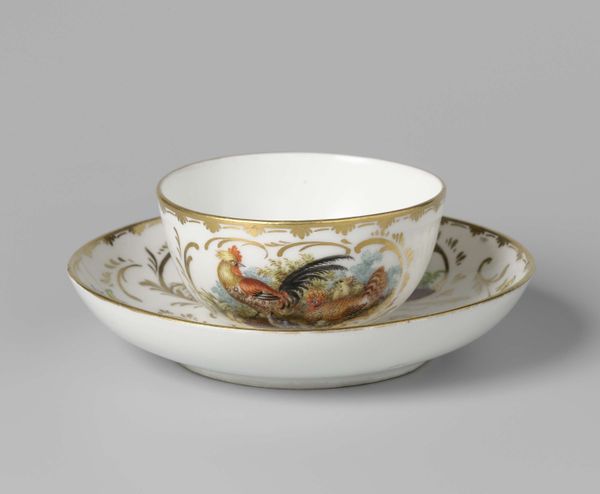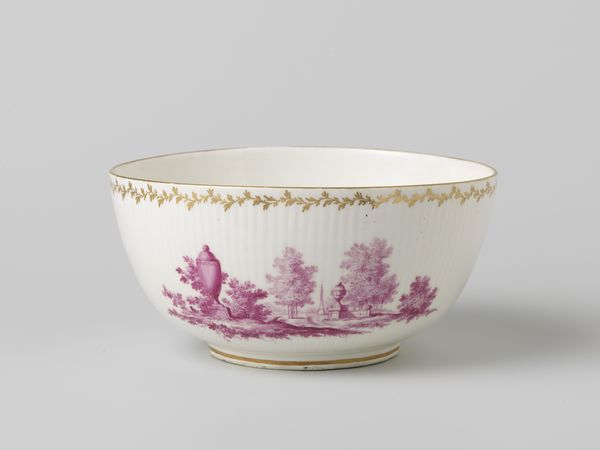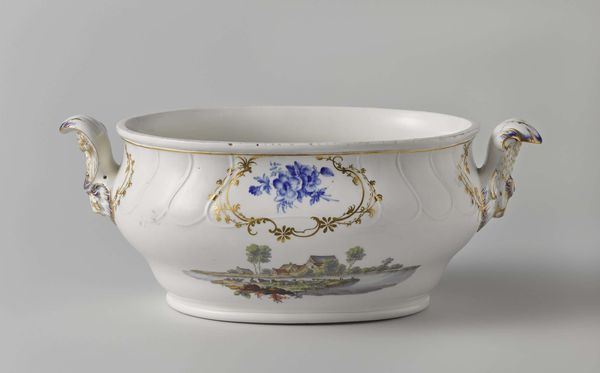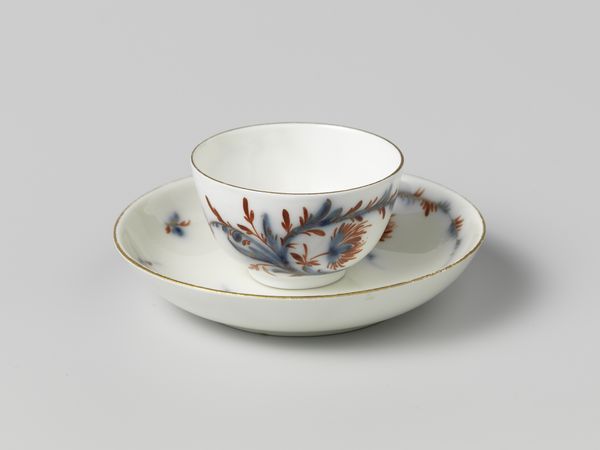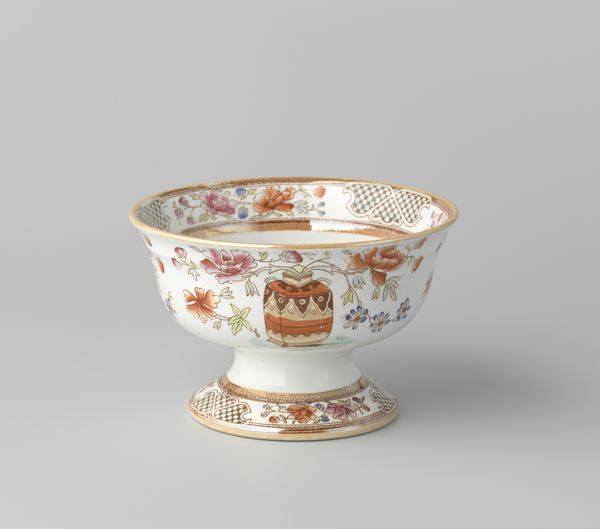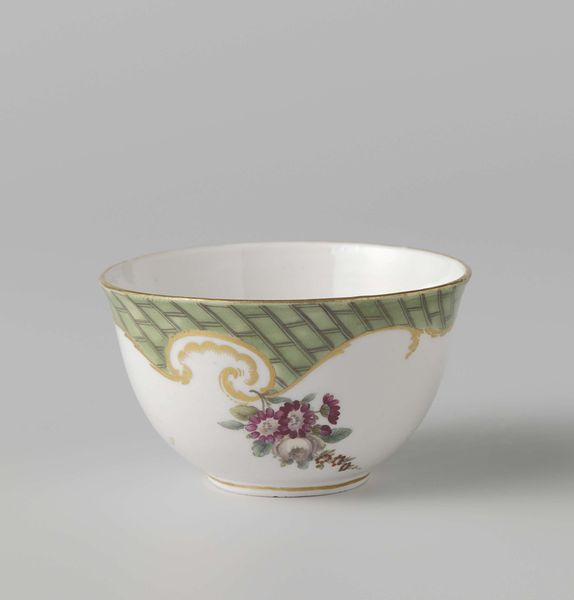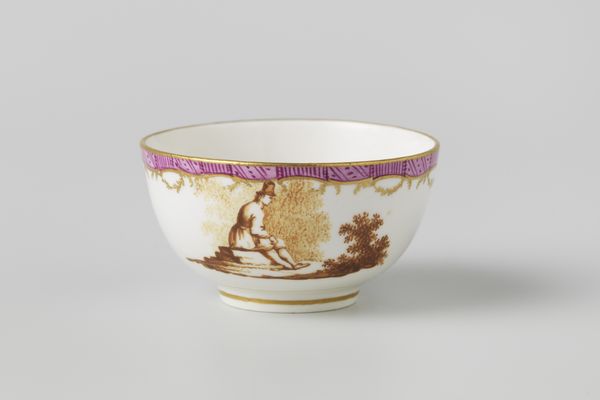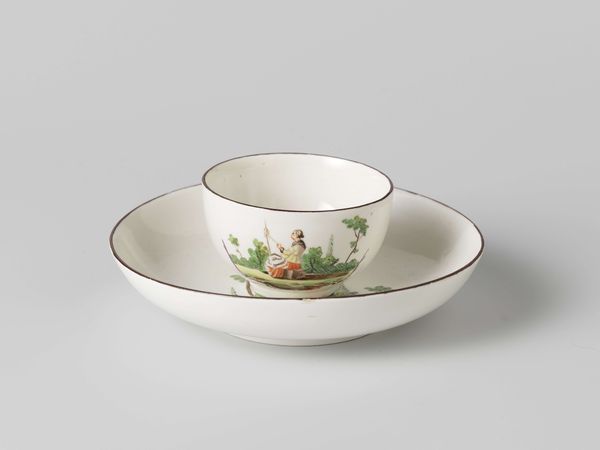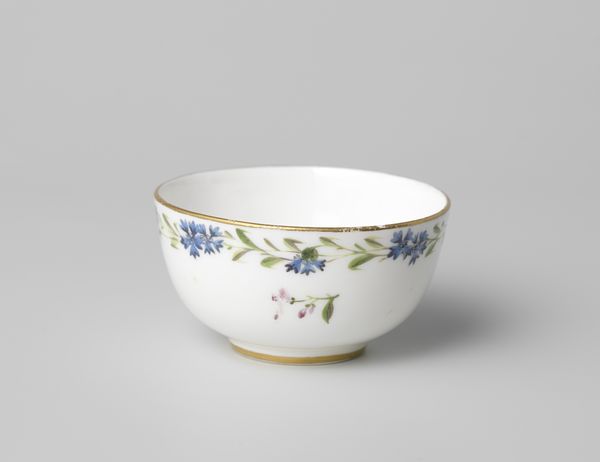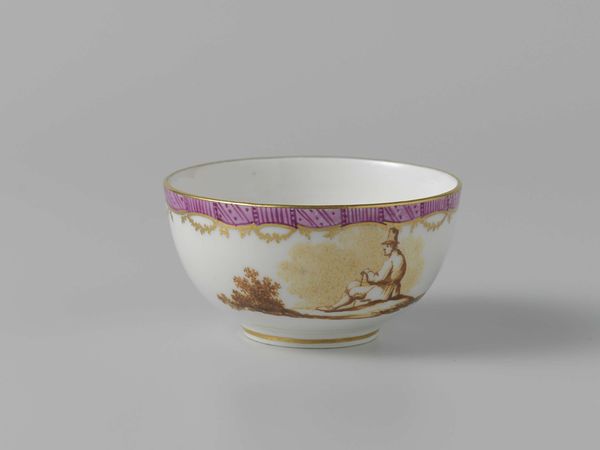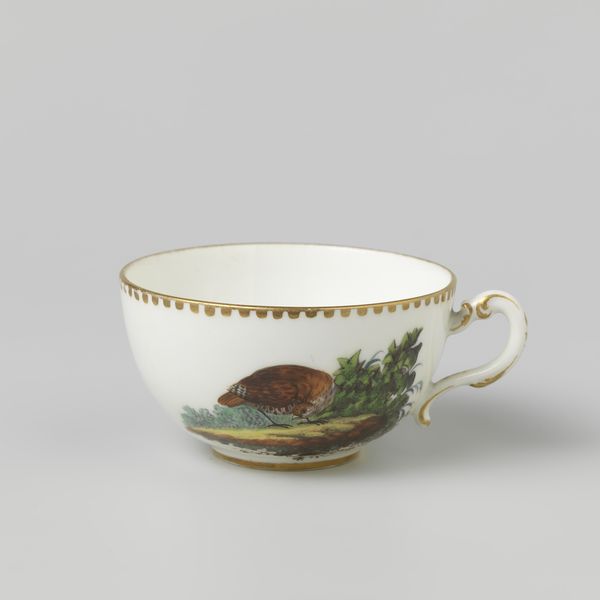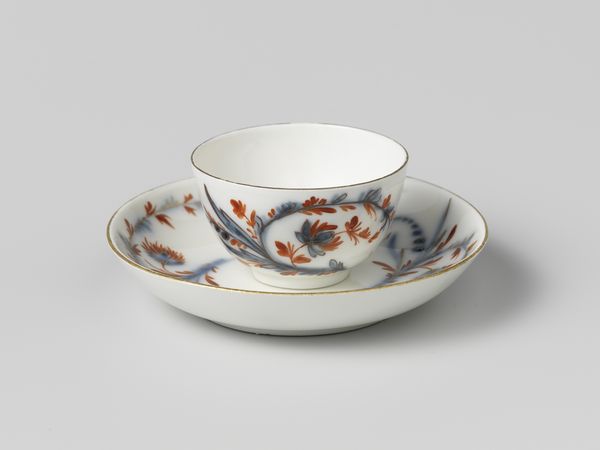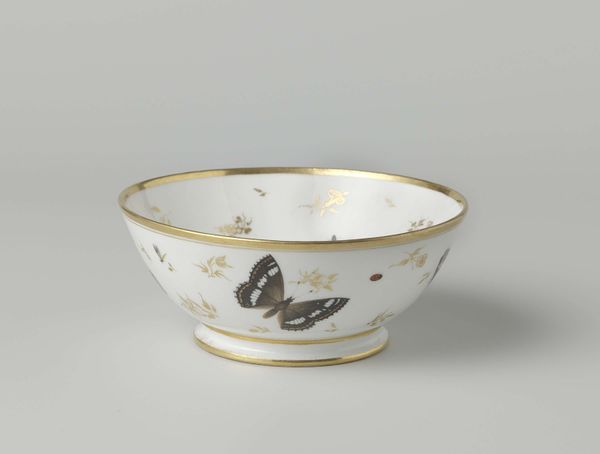
Dimensions: height 4.7 cm, width 8.5 cm, diameter 7.2 cm
Copyright: Rijks Museum: Open Domain
Curator: Looking at this piece, "Kop met das," or "Cup with badger," made circa 1777 to 1790 by the Porseleinfabriek Den Haag, my first thought is one of curious amusement. It’s a rather small object, this cup and saucer made of porcelain and rendered in such fine decorative details, it has that Rococo flair. Editor: Well, I'm immediately struck by how precious it all is, right? The materials themselves – the fine porcelain, the delicate application of gold leaf – all speak to a specific social context. This isn't utilitarian tableware; this is about display, about status. How are these porcelain pieces actually made? The high labor involved, the process itself of painting these pastoral scenes? Curator: Ah, yes! Consider how whimsical those painted landscapes are, little miniature worlds made to cradle your morning tea! The badger, almost hidden among the trees and shrubs, becomes this tiny, contemplative observer. Doesn’t it just hint at a peaceful rural idyll, one entirely consumed and transformed by artistry and refinement? Editor: Transformed, indeed! But I think it also veils the industrial processes that go into it. The mining of the raw materials, the factory labor creating standardized pieces and the highly skilled, possibly poorly-compensated, artists adding the “unique” touch. It’s an intricate interplay of art, labor and capital all wrapped in a delicate porcelain shell. I do think the Rococo love of asymmetry can be tied to capitalist desires, don’t you agree? Curator: Mmm, an interesting point. Thinking more personally though, I find a deep peace when my daily rituals, drinking coffee, tea, and such are ornamented by small art forms like this cup. Doesn’t something humble transform, then? Editor: Indeed. It invites reflection of the history and effort held in one object—and the human desire for the objects that fill our lives to feel artful and precious. Curator: So much is transformed! But if I focus on the artwork's presence here, and the joy it continues to give me as a form of expressive delight, I might agree. Thank you for our thoughts! Editor: And thank you! Thinking about where the badger fits in this history offers a chance to explore its impact further.
Comments
No comments
Be the first to comment and join the conversation on the ultimate creative platform.
